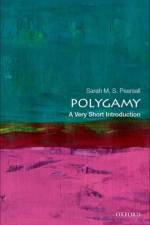av Sarah M. S. (Professor of History Pearsall
147
Marriage has not always meant just one man and one woman. For much of human history, over much of the globe, the most common alternative was polygamy: marriage involving more than one spouse. Polygamy, or plural marriage, has long been an accepted form of union in human societies, involving people living on every continent. However, polygamy has come to symbolize a problematic, even ΓÇ£barbaric,ΓÇ¥ form of marriage that is often labeled asΓÇ£backwards,ΓÇ¥ less modern and progressive, embodying the oppression of women by men.In Polygamy: A Very Short Introduction, Sarah M. S. Pearsall explores what plural marriages reveal about the inner workings of marriage and describes the controversies surrounding it. The book emphasizes the diversity of historical polygamist societies, from the Shi''ite Muslims and Wendat men who practiced short-term marriages to the Mixteca, Maori, Inca, Algonquin, and Marta indigenous people of North America and the Pacific Islands, as well as medieval Irish kings, rulers of theKingdom of Buganda in east Africa, and residents of the Ottoman Empire. Pearsall also explains the Old Testament origins of polygamy in the book of Genesis, making note of vocal Protestant defenders of the practice such as Martin Luther and John Milton, and the divides within Christianity that led to JosephSmith''s establishment of the Church of Jesus Christ of Latter-day Saints (Mormonism) and the Mormons'' fight throughout the 19th-century under his successor Brigham Young''s leadership to freely practice plural marriage.Polygamy: A Very Short Introduction looks at how polygamous domestic and sexual relationships have influenced larger dynamics of power, gender, rank, race, and religion in societies all over the world, while also attempting to untangle the paradox of female constraint and liberty for women who advocated for polygamy, arguing that plural marriage offered security and stability rather than restraint for women. In balancing an explanation of the many complexities and misunderstandings ofplural marriage, the book reveals how polygamy continues to have an influence on society today.

